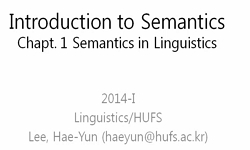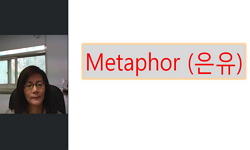『世宗實錄地理志』에는 139 곳의 磁器所가 八道에 분포되어 있으며, 磁器所의 數ㆍ위치ㆍ品等이 기록되어 있어 조선시대 초기의 磁器제작상황을 이해 하는데 매우 중요한 자료로 활용되고...
http://chineseinput.net/에서 pinyin(병음)방식으로 중국어를 변환할 수 있습니다.
변환된 중국어를 복사하여 사용하시면 됩니다.
- 中文 을 입력하시려면 zhongwen을 입력하시고 space를누르시면됩니다.
- 北京 을 입력하시려면 beijing을 입력하시고 space를 누르시면 됩니다.

『世宗實錄地理志(세종실록지리지)』 磁器所品等基準硏究(자기소품등기준연구) -慶尙道(경상도)를 중심으로- = A Study of grade standard of Ceramic Factory in Geography Monograph of King Sejong -Focus on Gyeongsang-do -
한글로보기https://www.riss.kr/link?id=A99800733
- 저자
- 발행기관
- 학술지명
- 권호사항
-
발행연도
2013
-
작성언어
Korean
-
주제어
『世宗實錄地理志 ; 세종실록지리지』 慶尙道上品 ; 경상도상품 ; 中品 ; 중품 ; 下品磁器所 ; 하품자기소 ; 品等基準 ; 품등기준 ; ‘品 ; 품’의 意味 ; 의미 ; 磁器品質 ; 자기품질 ; 磁器使用處 ; 자기사용처 ; 王室 ; 왕실 ; 官司 ; 관사 ; Geography Monograph of King Sejong『世宗實錄地理志』 ; Gyeongsang-do ; high·middle·low-quality ceramic factories ; a grade standard ; a meaning
-
등재정보
KCI등재후보
-
자료형태
학술저널
-
수록면
67-96(30쪽)
- DOI식별코드
- 제공처
-
0
상세조회 -
0
다운로드
부가정보
국문 초록 (Abstract)
『世宗實錄地理志』에는 139 곳의 磁器所가 八道에 분포되어 있으며, 磁器所의 數ㆍ위치ㆍ品等이 기록되어 있어 조선시대 초기의 磁器제작상황을 이해 하는데 매우 중요한 자료로 활용되고 있다. 지금까지의 磁器所연구는 지역별로 調査가 진행되어 品等別磁器의 특징이 밝혀지는 성과가 있었다. 그렇지만 上品ㆍ中品ㆍ下品으로 구분된 품등이 어떤 기준으로 선정되었는가에 대한 연구는 미흡하였다. 본 논문은 磁器의 品質과 使用處에 주목하여 上品·中品·下品磁器所가 모두 있는 경상도 자기소를 중심으로 문헌기록을 참고하고 자기를 비교ㆍ분석하여 『世宗實錄地理志』 磁器所의 品等基準을 연구한 것이다. 문헌기록에 있는 ‘品’의 의미를 찾아보았다. 그 결과 手工業品인 磁器와 紙, 鑛物인 鐵과 硫黃, 田稅등의 기록에서 ‘品’의 의미는 모두 ‘品質’이었음을 알수 있었다.『世宗實錄地理志』 경상도의 上品磁器所2 곳, 中品磁器所7 곳, 下品磁器所11 곳 등 총 20 곳에서 출토ㆍ수습된 분청사기를 대상으로 器種, 文樣裝飾技法, 文樣, 胎土, 釉色, 銘文, 窯道具등을 검토해 보았다. 품등별 자기의 차이점 중 品質과 가장 관련되는 부분은 분청사기의 胎土와 釉色에 있었다. 胎土는 상품 자기는 氣孔이 없고 치밀하며, 중품 자기는 약간의 沙粒이 있으나치밀하였다. 하품 자기는 氣孔과 沙粒이 많아 치밀하지 못하다. 釉色은 상품·중품 자기가 灰綠色인 반면 하품 자기는 黃褐色을 띠고 있다. 이와 같은 품질의 차이는 충청도의 중품ㆍ하품 자기소에서 수습된 분청사기의 비교를 통해 하품의 분청사기가 중품의 분청사기에 비해 품질이 좋지 않은 것으로 밝혀져 품등별로 품질에 차이가 있음을 알 수 있었다. 따라서 『世宗實錄地理志』 磁器所의 品等基準의 하나는 ‘磁器의 品質’을 기준으로 정해졌다고 보았다. 磁器의 使用處는 문헌기록과 『世宗實錄地理志』 상품·중품·하품 자기소에서 출토·수습된 분청사기와 백자를 참고로 하여 王室과 官司로 나누어 살펴보았다. 王室用磁器는 상품 자기소로 比定된 廣州, 高靈, 尙州등의 가마에서 출토·수습된 백자를 참고로 하였다. 王室에서 사용된 백자는 廣州ㆍ高靈ㆍ尙州상품자기소에서 제작되었을 가능성이 크다고 보았다. 그 근거로 첫째, 廣州ㆍ高靈ㆍ尙州등의 상품자기소에서 제작된 백자는 無文ㆍ陰刻ㆍ象嵌백자이며 官司銘이 없다는 점이다. 둘째, 왕실에서 백자를 사용한 시기는 세종 15년(1433)∼세종 29년(1447)인데 廣州ㆍ高靈ㆍ尙州상품자기소에서 백자가 제작된 시기는 1425년∼1460년대인 점을 제시하였다. 官司에서 사용된 磁器는 官司銘粉靑沙器의 예를 살펴보았다. 敬承府銘분청사기와 恭安府銘백자를 제외하고는 內贍銘분청사기는 전라도 중ㆍ하품자기소, 內資銘분청사기와 禮賓銘분청사기는 충청도 중품자기소, 地域銘과 함께 새겨진 仁壽府銘분청사기와 長興庫銘분청사기는 경상도 중ㆍ하품자기소에서 제작되었다. 各道의 중ㆍ하품자기소에서는 각기 다른 사용처인 官司에 분청사기와 백자를 貢納했음을 분명히 알 수 있었다. 따라서 『世宗實錄地理志』磁器所의 또 하나의 品等基準은 ‘磁器의 使用處’를 기준으로 정해졌다고 보았다.
다국어 초록 (Multilingual Abstract)
In Geography Monograph of King Sejong(『世宗實錄地理志』), there are 139 places of ceramic factories(磁器所) in the eight provinces(八道) and the number, the location, and the grade of the ceramic factories. Therefore, the record is a ve...
In Geography Monograph of King Sejong(『世宗實錄地理志』), there are 139 places of ceramic factories(磁器所) in the eight provinces(八道) and the number, the location, and the grade of the ceramic factories. Therefore, the record is a very important text of understanding situation for production of ceramics in the early of the Joseon Dynasty. As the investigation processed by regional groups, studies of ceramic factories have determined the features of the ceramics classified by the grade, so far. However, the study of how the standard of the grade as high, middle, and low quality is selected has been insufficient, until now. There is a purpose in this thesis which are to study the grade standard of the ceramic factory in Geography Monograph of King Sejong according to compare and analyze ceramics with reference to literature record for a grade standard of high, middle, and low-quality ceramic factory with focusing on quality and used place of ceramic. As a result of finding the meaning of ‘poom(品)’ in some literature records, the meaning of the letter is quality in the records of ceramic, paper, iron, sulfur, tax of farmland, and so forth. An object of the study is the grayish-blue-powdered celadon discovered at the 20 ceramic factories in Gyeongsang-do in Geography Monograph of King Sejong: the two high-quality ceramic factories, the seven middle-quality ceramic factories, and the eleven low-quality ceramic factories. And some points, model of ceramic, technique of pattern ornament, pattern, clay, glaze color, inscription, the instrument used in kiln, and so far, are examined by the objects. The clay and glaze color are related to the quality of the ceramic among the different points of the Grayish-blue-powdered celadon`s quality. In the case of the clay, the first, high-quality ceramics do not have stoma and is elaborated. The second, middle-quality ceramics have a little grain of sand but is detailed. The last, low-quality ceramics are not elaborated for a lot of stoma and grain of sand. In the case glaze color, high and middle-quality ceramics are greenish gray, but low-quality ceramics are yellowish brown. The reason of the difference of the quality is that the low-quality ceramics are worse condition than the middle-quality ceramics are though comparison with the Grayish-blue-powdered celadon from middle and low-quality ceramic factories in Chungchong-do. Therefore, the grade standard of the ceramic factory in Geography Monograph of King Sejong is considered by the quality of the ceramic. There could be divided a royal family and a government office for a used place of ceramic with reference to the Grayish-blue-powdered celadon and the White porcelain from literature record and Geography Monograph of King Sejong. So, it is bound to that the White porcelain for the royal family are from Gwangju(廣州), Goryeong(高靈), and Sangju(尙州) as a high-quality ceramic factory. The reasons are that the White porcelain from the high-quality ceramic factory are patternless, intaglio, and inlaid work porcelain without a inscription of a government office. The time of the using the White porcelain in royal family is from 1433(15years of King Sejong) to 1447(29years of King Sejong), however, the time of production of the White porcelain in the high-quality ceramic factories such as Gwangju(廣州), Goryeong(高靈), and Sangju(尙州) is from 1425 to 1460s. The case of the ceramics in used the governmen office is checked by the Grayish-blue-powdered celadon with inscription. The Grayish-blue -powdered celadon with Neseom inscription(內贍銘) is from the middle and low-quality factories in Jeonla-do. Yebin-si(禮賓寺銘) and Neja-si inscriptions(內資寺銘) are from the middle-quality ceramic factories in chungcheong-do. Jangheung-go(長興庫) and Insu-bu inscriptions(仁壽 府) with name of province are from in the middle and low-quality ceramic factories in Gyeongsang-do. As a result, Each middle and low-quality factories in the eight provinces payed tributes such as the Grayish-bl ue-powdered celadon and the White porcelain to each the government office. Therefore, the other grade standard of the ceramic is considered by used places of ceramics.
동일학술지(권/호) 다른 논문
-
東(동)아시아 古代佛殿(고대불전)의 規模(규모)와 佛像(불상)의 相關性硏究(상관성연구)
- 동아시아문물연구학술재단
- 한정호 ( Joung Ho Han )
- 2013
- KCI등재후보
-
- 동아시아문물연구학술재단
- 김갑진 ( Gab Jin Kim )
- 2013
- KCI등재후보
-
- 동아시아문물연구학술재단
- 나동욱 ( Dong Wook Na )
- 2013
- KCI등재후보




 RISS
RISS KISS
KISS






